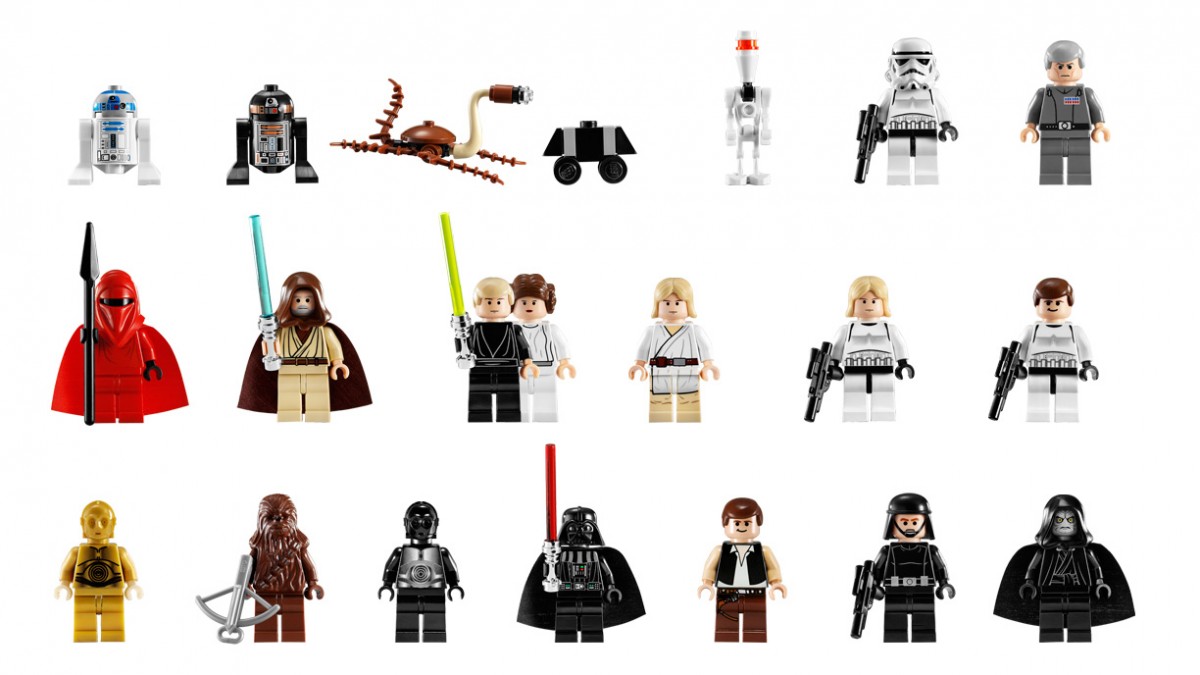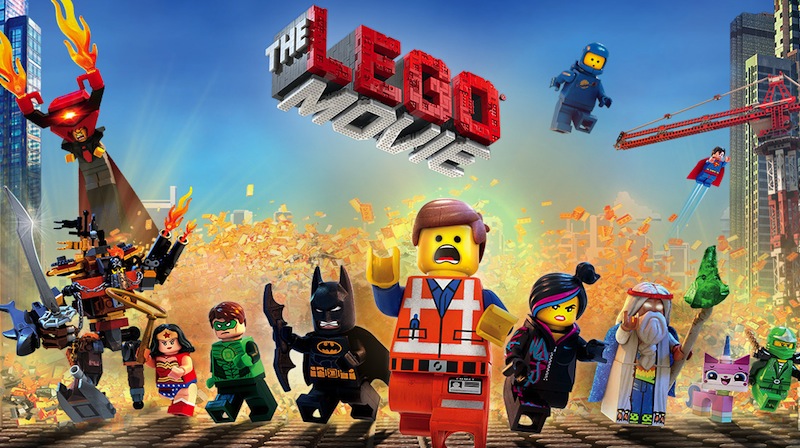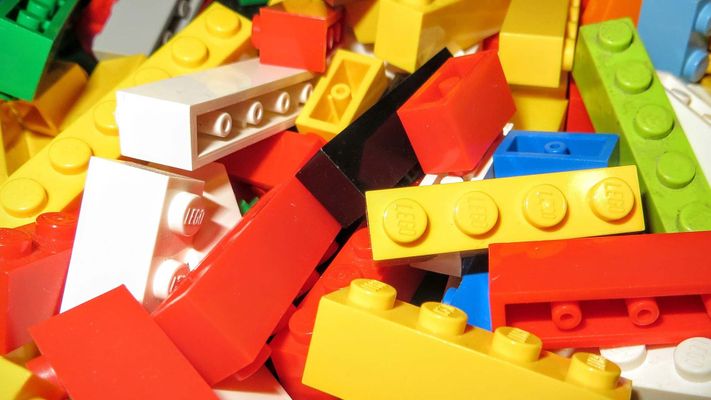Build Your Brand Brick by Brick Like Lego
Lego; the name is an abbreviation of the two Danish words “leg godt”, translating to “play well”. It’s the mantra that has motivated the Danish company since its conception in 1932. The last 15 years have been hugely profitable for Lego, which has gone from strength to strength… thanks to a dice with administration and a marketing campaign realignment. 
How did Lego rebuild their business? (And what tips can you take from their success story)
The Lego that we know and love today was first produced in 1958, and now, for every person on earth there are 94 Lego bricks. It’s the little plastic brick that we dread to step on, and the rare toy brand whose entertainment appeal stays far beyond childhood. Lego is a toy that’s not only managed to consistently modernise, enabling them to keep up with growing digital demands, but Lego also manages to entrance kids and adults alike for years, transcending generations and shifting consumer trends for decades. For many years, Lego reaped the rewards of their revolutionary thinking, benefiting from numerous decades of continued growth. Until 1998, when the brand reported its first deficit; they were brushing with bankruptcy. They had to make a change, and quickly. In 1999, Lego moved into licensing. It was this business decision that proved to be hugely profitable; it’s the decision that allowed partnerships such as Lego Star Wars (which release date fantastically coincided with The Phantom Menace film) to come to fruition.  The business move spelt huge income for Lego, with their turnover shooting up at an unprecedented rate. However, the company had become so volatile during their downward turn that they could no longer control the bottom line. They began haemorrhaging money, in 2003 The Lego Group reported a deficit of 1.4bn Danish kroner (at the current exchange rate that’s £160,568,181). Lego were making money, but needed a tighter system to expel their uncontrollable leakage of profits. Conny Kalcher, vice-president of marketing and consumer experiences, commented on their gargantuan deficit saying, “we went totally astray as a company, and I think if we’d had more focus on the consumer, and had listened to them, we would have seen the warning signs earlier than we did”. Company owner Kjeld Kirk Kristiansen, who is the richest man in Denmark and the grandson of the company's founder, began the process of rebuilding the beloved brand from the ground up. “We are a manufacturing company so we were driven by engineers – we had to move the company to become much more consumer-focused,” says Kalcher, speaking at the recent Global Marketers’ Conference in Marrakech. Like its neatly stacking bricks, Lego needed its consumer touchpoints to lock together effectively. To understand their audience better, the company began segmenting it by affinity and using net promoter scores. Brands that listen to their consumers often execute successful strategies thanks to the ability to tailor them to their audience. Kalcher explains that they learnt “if you want to be a premium brand you have to keep demonstrating that you are listening”, which is why audience involvement is now a major part of every marketing campaign. For instance, in the past 10 years Lego has embraced content like no other toy brand after realising the need to modernise and remain relevant. Not only this, but they showed an understanding of the knowledge, enthusiasm and engagement from their fan-base when asked to help meet their demand for content. Co-creation with fans became an intrinsic part of the Lego marketing strategy. The benefits are obvious; the most dedicated fans often know the product better than the company itself. The Lego Movie actually featured mini-movies made by their fans, while the Lego ideas platform allows fans to propose their own ideas for new sets. Once an idea garners support from 10,000 members of the community, the concept is reviewed for the potential to created! This way no money is wasted creating products that haven’t been voted for by their very own audience.
The business move spelt huge income for Lego, with their turnover shooting up at an unprecedented rate. However, the company had become so volatile during their downward turn that they could no longer control the bottom line. They began haemorrhaging money, in 2003 The Lego Group reported a deficit of 1.4bn Danish kroner (at the current exchange rate that’s £160,568,181). Lego were making money, but needed a tighter system to expel their uncontrollable leakage of profits. Conny Kalcher, vice-president of marketing and consumer experiences, commented on their gargantuan deficit saying, “we went totally astray as a company, and I think if we’d had more focus on the consumer, and had listened to them, we would have seen the warning signs earlier than we did”. Company owner Kjeld Kirk Kristiansen, who is the richest man in Denmark and the grandson of the company's founder, began the process of rebuilding the beloved brand from the ground up. “We are a manufacturing company so we were driven by engineers – we had to move the company to become much more consumer-focused,” says Kalcher, speaking at the recent Global Marketers’ Conference in Marrakech. Like its neatly stacking bricks, Lego needed its consumer touchpoints to lock together effectively. To understand their audience better, the company began segmenting it by affinity and using net promoter scores. Brands that listen to their consumers often execute successful strategies thanks to the ability to tailor them to their audience. Kalcher explains that they learnt “if you want to be a premium brand you have to keep demonstrating that you are listening”, which is why audience involvement is now a major part of every marketing campaign. For instance, in the past 10 years Lego has embraced content like no other toy brand after realising the need to modernise and remain relevant. Not only this, but they showed an understanding of the knowledge, enthusiasm and engagement from their fan-base when asked to help meet their demand for content. Co-creation with fans became an intrinsic part of the Lego marketing strategy. The benefits are obvious; the most dedicated fans often know the product better than the company itself. The Lego Movie actually featured mini-movies made by their fans, while the Lego ideas platform allows fans to propose their own ideas for new sets. Once an idea garners support from 10,000 members of the community, the concept is reviewed for the potential to created! This way no money is wasted creating products that haven’t been voted for by their very own audience.  Alongside all of this, Lego introduced real-time ‘listening stations’, which allow Lego to monitor chit-chatter about the business – and response quickly if needed.
Alongside all of this, Lego introduced real-time ‘listening stations’, which allow Lego to monitor chit-chatter about the business – and response quickly if needed.
So, where are Lego now?
Thanks to their decision to licence in 1999, which allowed Lego to partner with other large brands. Lego went on to surpass Mattel as the biggest toy company in the world in 2014. Sales tied to the releases of the Star Wars and Jurassic Park movies pushed revenues up 25% in the year-ending June 2015. And according to a report issued by Brand Finance, in 2015 Lego overtook Ferrari as the World’s Most Powerful Brand. And the moral of the story? It doesn’t matter what state of disrepair your brand is in, a realignment of your marketing efforts – when well researched and expertly executed – can help turn around any situation. Did you enjoy this blog? Why not like us on Facebook for more topical content!













